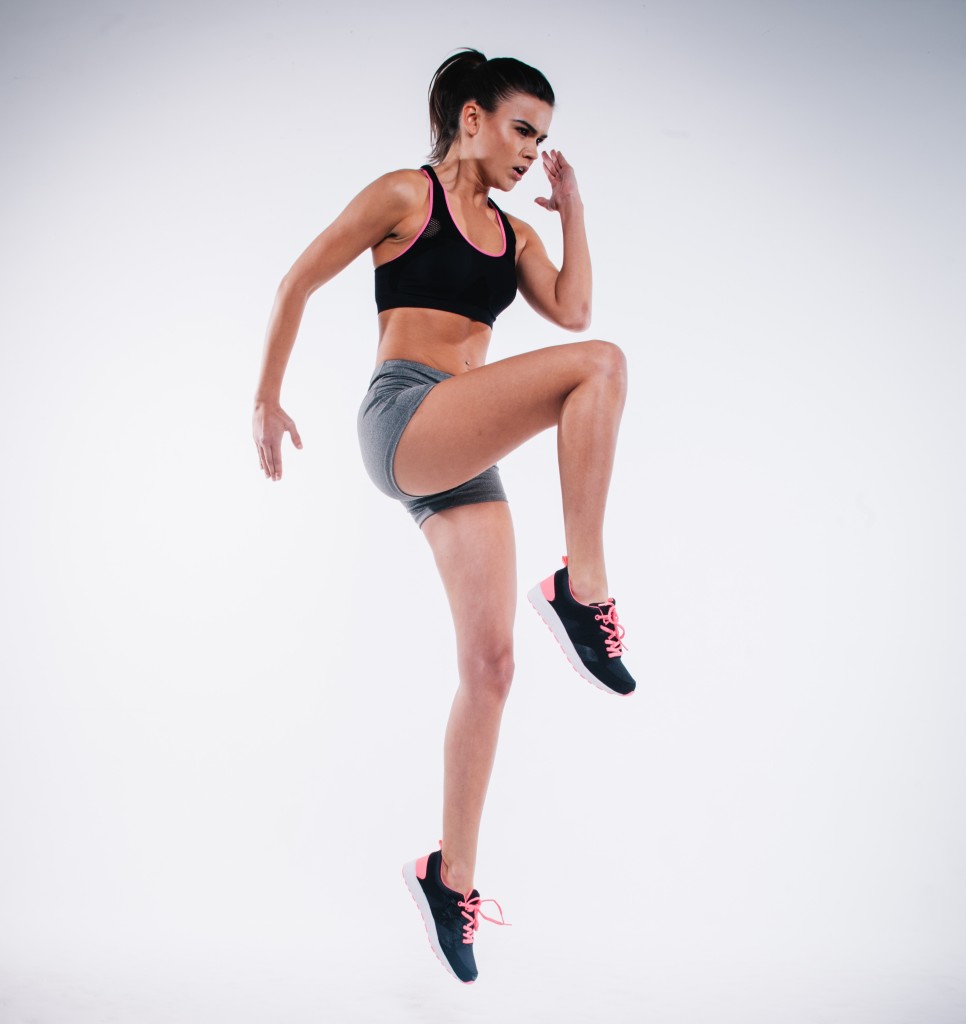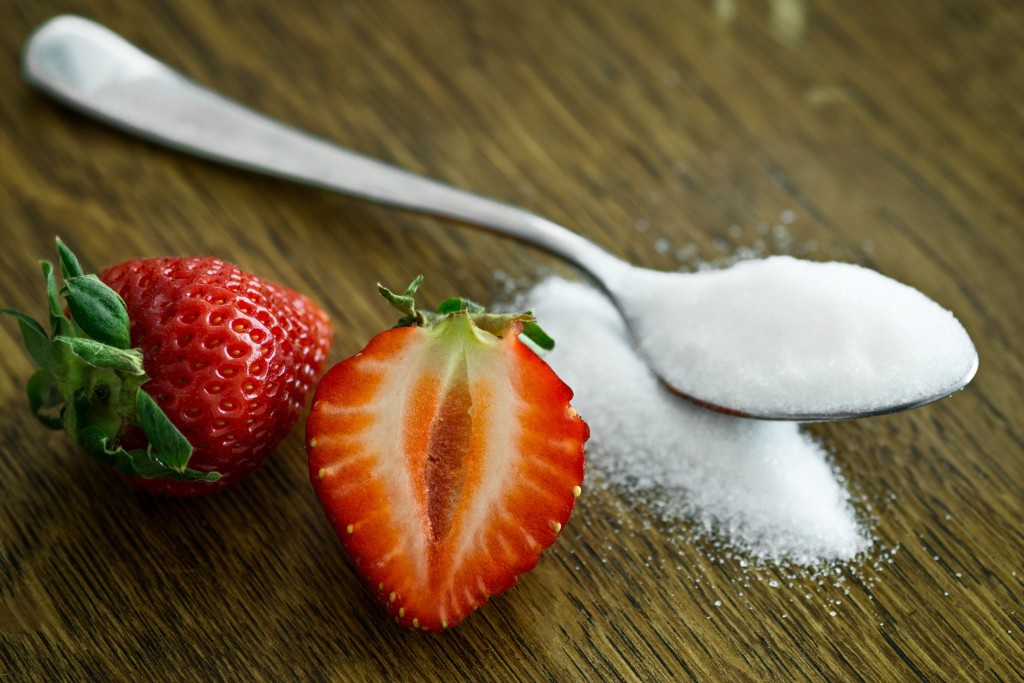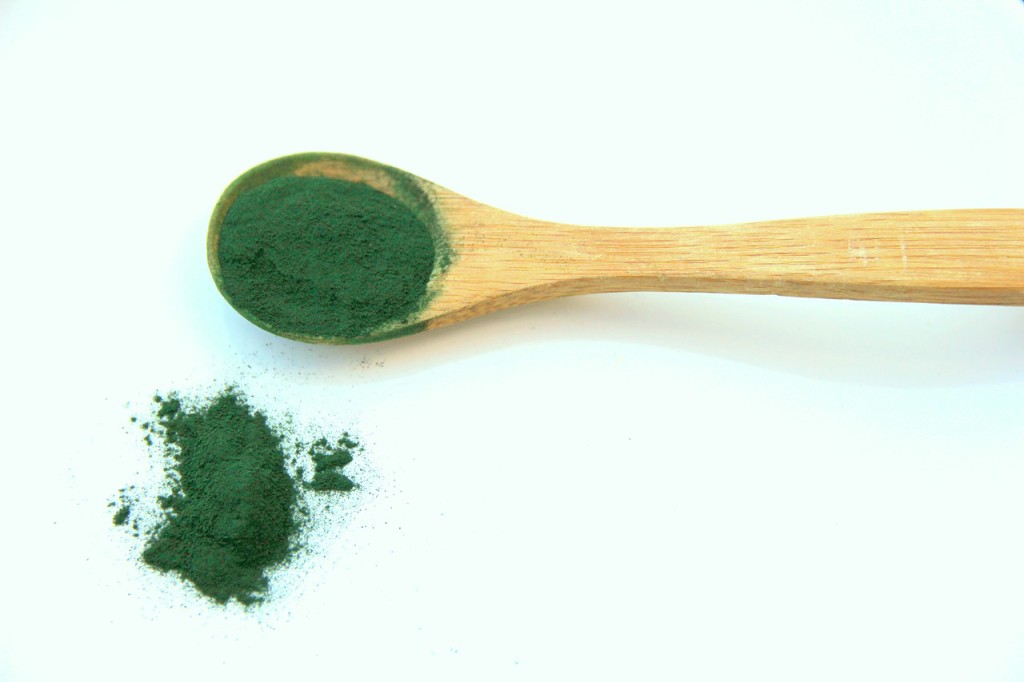Tags
acne aging anti-aging beauty detox diet exercise fasting healing health healthy lifestyle healthy living healthy recipes inspiration juicing Living la Vida Raw meditation mindfulness Move Your Body Natural Beauty natural cures Natural Cures natural remedies nutrition nutritionist parasites raw raw food Raw Food for Thought raw foods raw girl Raw News raw recipes Raw Spirit Recipes skin spirulina stress vegan vegan lifestyle vegan recipes vegetarian Veggie Love wellness yogaNewsletter Sign-up
Tag Archives: healthy living
The Benefits of Intermittent Fasting
Unless you’ve been under a rock, you’ve probably heard about the recent exponential surge in people trying intermittent fasting to lose weight, build muscle mass, and increase energy. I’ve always lived a fasted lifestyle, so when by the time I heard about IF I realized I was already doing it! Intermittent fasting is the practice of consuming your daily calories within a restricted time window. It is not an diet, it is more of an eating protocol. The idea is to get the same amount of calories you would normally eat within your eating window. For example from 8 am to 8 pm, which is a moderate twelve hour window, or the popular 9-5 pm, which allows for 16 hours of fasting and an eight hour window for eating. In our modern age of fad diets and quick nutrition fixes, the practice of fasting remains constant as a tried and true discipline that has been scientifically proven to provide health benefits and unleash the super-charged power to heal conditions.
If going cold turkey on food for days seems too intense for you, intermittent fasting or restricting your food intake to a short eating window in one day, may be a way to still get some of the positive results. Research has proven that intermittent fasting has similar benefits to fasting longer periods when incorporated regularly. One study followed overweight adults with moderate asthma who consumed only 20% of their normal calorie intake on alternate days [5]. The subjects who were able to stick to the diet lost 8% of their body weight over an eight week period, decreased markers of oxidative stress and inflammation, improved asthma-related symptoms, and several quality-of-life indicators.
Another study, found that intermittent fasting was as effective as longer term continuous restriction for improving weight loss, insulin sensitivity and other health biomarkers [3]. Intermittent fasting also improves brain functioning, as a lack of eating for 10-16 hours starts the flooding of ketones in the body, which have been shown to protect memory and learning functionality, as well as slow disease processes in the brain. Going in to full on ketosis, however, does not happen until 2-3 days into fasting with no intake of food.
Dr. Jason Fung, Author of The Complete Guide to Fasting and several other fasting books, has been implementing a fasting protocol to heal clients of Type 2 Diabetes, PCOS, and many other conditions related to glucose intolerance and more. One of my favorite parts of The Complete Guide to Fasting are the testimonials from patients with a range of conditions who tried fasting and were successful in reversing their conditions and coming off of medications. The most insightful thing I took from this book was Dr. Fung’s personal professional revelation that the way we treat diabetes in Western medicine actually leads to further progression of the disease as the medications cause weight gain and the excess weight worsen the condition. He realized that by reducing the amount of insulin in the diet by decreasing the amount of carbs or frequency of eating (fasting being the complete reduction), allows those with glucose intolerance to heal faster and lose the weight. The patients were on a low carbohydrate, high in healthy fats diet, and incorporated two to three days of complete fasting alternating with days of eating. If you or someone you love is struggling with diabetes, I highly recommend you read this book and consult with a physician to help you with a fasting protocol. Doing it on your own can be dangerous if your medication is not also reduced with the practice because your blood sugar levels could get dangerously low.
Last, but not least, one of the most important benefits of any type of fasting is that it activates the parasympathetic nervous system which helps to relax, rest, digest food properly, and enables the body to heal itself. Most of us are taught to try to eat our way to health, when in fact, refraining from food allows the body to repair and restore. If you are struggling with healing or just want to incorporate a practice that can boost your health I highly recommend giving fasting a try. -Xo Raw Girl
References:
- Collier, R. (2013). Intermittent fasting: the science of going without. CMAJ : Canadian Medical Association Journal, 185(9), E363–E364. http://doi.org/10.1503/cmaj.109-4451
- Dai, Q., Borenstein, A. R., Wu, Y., Jackson, J. C., & Larson, E. B. (2006). Fruit and Vegetable Juices and Alzheimer’s Disease: The Kame Project. The American Journal of Medicine, 119(9), 751–759. http://doi.org/10.1016/j.amjmed.2006.03.045
- Harvie MN, Pegington M, Mattson MP, Frystyk J, Dillon B, Evans G, Cuzick J, Jebb SA, Martin B, Cutler RG, Son TG, Maudsley S, Carlson OD, Egan JM, Flyvbjerg A, Howell A. The effects of intermittent or continuous energy restriction on weight loss and metabolic disease risk markers: a randomized trial in young overweight women. Int J Obes (Lond). 2011 May;35(5):714-27. doi:10.1038/ijo.2010.171. Epub 2010 Oct 5. PubMed PMID: 20921964; PubMed Central
PMCID: PMC3017674. - Johnson JB, Summer W, Cutler RG, Martin B, Hyun DH, Dixit VD, Pearson M, Nassar M, Telljohann R, Maudsley S, Carlson O, John S, Laub DR, Mattson MP. Alternate day calorie restriction improves clinical findings and reduces markers of oxidative stress and inflammation in overweight adults with moderate asthma. Free Radic Biol Med. 2007 Mar 1;42(5):665-74. Epub 2006 Dec 14. Erratum in: Free Radic Biol Med. 2007 Nov 1;43(9):1348. Tellejohan, Richard [corrected to Telljohann, Richard]. PubMed PMID: 17291990; PubMed Central PMCID: PMC1859864.
- PAKerndt, P. R., Naughton, J. L., Driscoll, C. E., & Loxterkamp, D. A. (1982). Fasting: The History, Pathophysiology and Complications. Western Journal of Medicine, 137(5), 379–399.
7 Alternatives to Refined Sugar
Did you know that the average American consumes around 130 lbs of sugar every year? The average adult consumes around 22 teaspoons per day, and the average child 32 teaspoons of sugar per day. Consuming excess sugar can lead to a wide range of health issues including diabetes, hypoglycemia, insulin resistance, mood swings, and fatigue. Besides soothing our taste buds, sugar has an addictive effect on our brain chemistry which causes us to need more and more to satisfy our cravings. In addition, excess consumption of sugar can accelerate the aging process. As we age, it’s important to reduce the amount of sugar we consume by eliminating processed and packaged foods, monitoring sugar content in our condiments, and replacing refined sugar with alternatives that will not have as drastic an effect on our blood glucose levels. Below are seven options, for sugar substitutes that can be used in a variety of dishes in place of refined sugar and offer a guilt-free alternative. If you would like a FREEBIE, I also created a handout with this list of these substitutes and two bonus recipes that you can download HERE. -XO Raw Girl
- Molasses (Blackstrap or Dark)
Obtained by boiling raw cane sugar until it becomes a thick, dark syrup. Blackstrap molasses is the result of a third boiling which concentrates its nutrients and deep rich flavor.
- Rich in antioxidant capacity
- Rich in calcium, iron, potassium, manganese, and vitamin B6
- Calories – 22 per teaspoon
- Glycemic Index: 55 – 60
- Maple Syrup
Produced by boiling the sap from maple trees. Beware of imposters! Some so-called maple syrup is simply corn syrup with maple flavoring.
- Moderate antioxidant capacity.
- Darker varieties tend to be richer in antioxidants.
- Contains manganese, calcium, potassium and zinc.
- Calories: 14 per teaspoon
- Glycemic Index: 54
- Coconut Sugar (Coconut Palm Sugar)
Coconut sugar is derived from sap collected from the coconut palm flower. The sap is heated until most of the moisture is evaporated. The color and texture is similar to that of raw sugar.
- Contains iron, zinc, calcium, and magnesium, in small amounts
- Calories: 16 per teaspoon
- Contains the fiber inulin, which may slow glucose absorption
- Glycemic Index: 55
- Medjool Dates
This natural sweetener is a good source of energy due to its high sugar content. This is somewhat balanced by its high fiber content, making the date a good source of complex carbohydrates.
- High in antioxidants
- Calories: 2 dates (~40g) is about 100 calories
- Good source of dietary potassium
- Glycemic Index: 42 – 46
- Stevia
Stevia is a natural extract of a plant in the daisy family and has been used in South America & Asia for hundreds of years as a sweetener. It is 100-300 times sweeter than sugar so you need very little to sweeten. A zero glycemic index score means that eating stevia will not raise your blood sugar. Stevia contains no carbohydrates and no calories and accordingly has a glycemic index of zero.Stevia may lower your blood glucose so you may want to be careful if you are a diabetic and watch your blood sugar levels after using this additive.
- Calories: 0
- Glycemic Index: 0
- Xylitol
Xylitol is a sugar alcohol found in most plant material, and is often extracted from birch wood. It is not converted in the mouth to acids that cause tooth decay. In fact, it is actually added to products to prevent tooth decay. It is sweet like sugar, but has fewer calories.
- Calories: 9 per teaspoon
- Glycemic Index: 7 – 12
- Agave Nectar
Agave nectar is made from the heated, filtered sap of the blue agave plant. High in fructose, agave nectar does not rapidly raise blood glucose. Although worth mentioning, agave can become unhealthy when consumed in large amounts. It should be used sparingly, as excessive consumption of fructose may adversely impact liver function and contribute to insulin resistance.
- Calories: 60 per tablespoon
- Glycemic Index: 17 – 27
- Fructose content is high, which may contribute to insulin sensitivity.
- May be harder to digest due to fructose content
References:
Coconut Sugar – A Healthy Sugar Alternative or a Big, Fat Lie? (2018). Retrieved May 27, 2018, from https://www.healthline.com/nutrition/coconut-sugar#section2
Harvard Health Publishing. (2015). Glycemic index for 60 foods – Harvard Health. Retrieved May 28, 2018, from https://www.health.harvard.edu/diseases-and-conditions/glycemic-index-and-glycemic-load-for-100-foods
Phillips, K. M., Carlsen, M. H., & Blomhoff, R. (2009). Total antioxidant content of alternatives to refined sugar. Journal of the American Dietetic Association, 109(1), 64-71.
The Ultimate Ranking Of The 9 Most Popular Natural Sweeteners. (2015). Retrieved July 02, 2016, from http://www.prevention.com/food/healthiest-natural-sweetners.
The University of Sydney. (2017) Glycemic Index. Retrieved May 27, 2018, from http://www.glycemicindex.com/index.php
Walton, A. G. (2012, August 30). How Much Sugar Are Americans Eating? [Infographic]. Retrieved July 12, 2018, from https://www.forbes.com/sites/alicegwalton/2012/08/30/how-much-sugar-are-americans-eating-infographic/#7d05307d4ee7
Xylitol: Uses, Side Effects, Interactions, Dosage, and Warning. (n.d.). Retrieved from https://www.webmd.com/vitamins/ai/ingredientmono-996/xylitol
Food for Thought: Using The Power of Your Mind to Heal
I’m a strong believer in the power of continuously challenging my mind. Whether it be reading a book, listening to an awesome podcast, or finding inspiring and informative shows on YouTube, nowadays there’s almost too much content to choose from. That’s why the cream of the crop content definitely rises to the top. The past few weeks, I have been fascinated, inspired, and motivated with the guests and interviews on Impact Theory created by Tom Bilyeu. If you are in the mood to be motivated and activated to make some real changes in your life, I highly recommend watching as many episodes of this show as you can.
The episode above, “The Power of Thought,” I wanted to share with you, because it elaborates on some of the topics I’ve talked about recently on the blog relating to the nervous system and it’s impact on our health. Most importantly, Dr. Joe Dispenza elaborates on the power of our mind and thoughts to heal and also to create stress, habitual actions, and disease in our lives. If you are someone who feels stuck in a never ending cycle of behaviors you’d like to change, someone struggling with a stress-related condition or high stress lifestyle, or if you just want to create the most epic life ever, I highly suggest you watch this entire episode. -XO
African Superfoods: The Amazing Health Benefits of Teff
 Have you ever had Ethiopian or Eritrean food? If so, were you aware that injera the fermented bread that usually accompanies most dishes is super healthy for you and rich in essential nutrients? If you are completely clueless, this one’s for you boo.
Have you ever had Ethiopian or Eritrean food? If so, were you aware that injera the fermented bread that usually accompanies most dishes is super healthy for you and rich in essential nutrients? If you are completely clueless, this one’s for you boo.
Most people are completely unaware that Africa boasts some of the worlds most powerful superfoods. During my travels on the continent of Africa, I have become obsessed with finding incredible nutrient dense foods that are used in traditional African dishes. Today I want to shine spotlight on injera, a sour dough-risen flatbread with a slightly spongy texture that is light brown in color and a staple in Ethiopian or Eritrean cuisine. Injera can be prepared using variety of flours such as sorghum but most commonly used is teff which is a tiny super grain that has serious super powers. Genetic evidence has show than teff was one of the earliest plants domesticated and may have originated in Ethiopia and Eritrea between 4000 BC and 1000 BC.
So what makes injera a superfood? Injera is rich source of various essential nutrients including fiber, protein, and vitamins. It contains high amount of protein including all 8 essential amino acids, high amounts of vitamins A, C, K, many of the B vitamins, and a wide range of minerals including ( high amounts of iron and calcium, along with potassium, phosphorus, magnesium, and zinc). Injera made from pure teff is gluten-free making it and suitable for consumption for people with Celiac disease or gluten intolerance. In 1996, the United States National Research Council characterized teff as having the “potential to improve nutrition, boost food security, foster rural development and support sustainable land care”. To drive home how the consumption of injera or teff affects those who eat it as a native food, there are very low incidences of anemia, osteoporosis, and diabetes in Ethiopia and some researchers do connect this to the inclusion of teff in the daily local diet.
One serving of Injera has nutrients that boost circulation, maintain electrolyte imbalance, aids with blood coagulation, and maintains healthy eyesight. It contains 20-40% resistant starches and is low on the glycemic index so it will not leave you with an energy hangover and is actually a wonderful food for diabetics as it helps to maintain balanced blood sugar levels. The Antioxidant content in injera acts to protect the cell damages from free radicals, decreases risk of heart disease and cancer. Injera made from sorghum provides high level of minerals like magnesium (which is essential for stress relief), iron, and B vitamins like niacin and thiamine.
To add to the laundry list of amazing health benefits of injera, consuming it improves digestion, reduces menstrual issues, improves bone health, supports proper growth and development, boosts the immune system, and the insoluble fiber detoxifies the body improving elimination of waste and toxins. Alongside powerhouse grains such as quinoa and spelt, teff should be acknowledged as a legit superfood as it is low in fat, sodium, high in fiber, and contains a nutrient profile that can help you lose weight, remain disease free, and optimize your health! -XO Raw Girl
4 Steps to Reducing Your Blood Pressure Naturally
![]() If you told me you knew absolutely no one struggling with high blood pressure, I’d think you were from another planet. According to the Center for Disease control, 75 million Americans or 29% of the U.S. population have high blood pressure. This means that 1 in 3 American adults struggles with high blood pressure and any related conditions. The great news is that research has shown, that high blood pressure can be treated and even reversed with lifestyle and diet interventions. I personally have worked with clients to reduce their blood pressure and it’s amazing what can happen in a very short period of time with just a few nutritional or lifestyle interventions. Below are four steps that can help those struggling with high blood pressure, to lower it naturally.
If you told me you knew absolutely no one struggling with high blood pressure, I’d think you were from another planet. According to the Center for Disease control, 75 million Americans or 29% of the U.S. population have high blood pressure. This means that 1 in 3 American adults struggles with high blood pressure and any related conditions. The great news is that research has shown, that high blood pressure can be treated and even reversed with lifestyle and diet interventions. I personally have worked with clients to reduce their blood pressure and it’s amazing what can happen in a very short period of time with just a few nutritional or lifestyle interventions. Below are four steps that can help those struggling with high blood pressure, to lower it naturally.
-XO Raw Girl
- Reduce Sodium. Excess salt in the diet is one of the most widely known and common culprits of high blood pressure. How does this happen? For one, some of us know we shake that salt shaker just a little too vigorously at every meal. In addition to being liberal with our seasoning, there’s more sodium in your food than you think, especially if you are eating fast food, out at restaurants regularly, or not reading labels at the grocery store. The best way to control your sodium content is to prepare your own meals, use salt-free seasonings and herbs to add flavor to your food, and read your labels. When you do eat out, it’s important to look for and ask for low sodium options. If you have high blood pressure, it’s recommended that you consume less than 1500 mg of sodium per day.
- Reduce Stress. In addition to diet, the amount of stress from work, family, and your environment can have a profound effect on blood pressure. Although sometimes there are many life events outside of our control, we can control how we respond, and how we prepare for stress. In short, it’s mega important that we learn to take a chill pill. To equip ourselves and lower our stress levels it’s important to incorporate daily and weekly mindfulness activities that help us set the tone for the day. Yoga, meditation, prayer, forest bathing, meditative walks, and journaling are just a few techniques you can use to help you get centered.
- Eat a Plant-Based Diet. When I take on clients, there are several conditions that I strongly encourage going VEG, and high blood pressure is one of them. Research has proven that eliminating meat from the diet can be a lifestyle change that works as well as medications to lower blood pressure. There are a few options for this and modifications based on your preference. If you cannot live without meat, eating plant-based and incorporating cold water fish is an option, or vegetarian which includes eggs and dairy, or vegan which removes all animal products. Whichever you choose, it’s ideal to continue with your diet change for one to two months to get results. Eliminating processed meats is key, as most are very high in sodium.
- Exercise Regularly. Moving your body is one of the best health remedies for optimal health. The stress on the heart that happens due to exercise is positive and improves cardiovascular health, while the stress of high blood pressure has a negative effect on the bodies’ functioning. The American Heart Association recommends 150 minutes of moderate exercise or 75 minutes of vigorous exercise per week to improve cardiovascular health. When working to lower blood pressure or cholesterol the recommendation is 40 minutes of vigorous exercise three to four times per week in order to prevent heart attack or stroke.
References:
Exercise is good for the heart, high blood pressure is bad: Researchers find out why. (2018, January 09). Retrieved August 12, 2018, from https://www.sciencedaily.com/releases/2018/01/180109125224.htm
Ho CP, Yu JH, Lee TJF. Ovo-vegetarian diet is associated with lower systemic
blood pressure in Taiwanese women. Public Health. 2017 Dec;153:70-77. doi:
10.1016/j.puhe.2017.07.032. Epub 2017 Sep 25. PubMed PMID: 28957713.
Yokoyama Y, Nishimura K, Barnard ND, Takegami M, Watanabe M, Sekikawa A,
Okamura T, Miyamoto Y. Vegetarian diets and blood pressure: a meta-analysis. JAMA
Intern Med. 2014 Apr;174(4):577-87. doi: 10.1001/jamainternmed.2013.14547. PubMed
PMID: 24566947.
5 Reasons to Love Tabata
 Since summer has officially arrived, I ditched the gym to focus on outdoor workouts, and also exercising in the comfort of my home. Working out a home can be horrible at times, because it’s so easy to slack off when you don’t have the energy and intensity of a trainer or instructor, yelling at you to push for one more rep. Add to that all of the potential distractions and you could end up cleaning or answering morning emails instead of moving your body like you swore you would. The workout that has kept me motivated an on-track is Tabata. There are many reasons why I love it, but I think the top reason is how simple it is to execute and get results. If you have small children Tabata can also be a fun exercise for them to join in on as well. Below are more reasons I love Tabata, hope they encourage you to give it a try.
Since summer has officially arrived, I ditched the gym to focus on outdoor workouts, and also exercising in the comfort of my home. Working out a home can be horrible at times, because it’s so easy to slack off when you don’t have the energy and intensity of a trainer or instructor, yelling at you to push for one more rep. Add to that all of the potential distractions and you could end up cleaning or answering morning emails instead of moving your body like you swore you would. The workout that has kept me motivated an on-track is Tabata. There are many reasons why I love it, but I think the top reason is how simple it is to execute and get results. If you have small children Tabata can also be a fun exercise for them to join in on as well. Below are more reasons I love Tabata, hope they encourage you to give it a try.
- It’s a Workout Backed by Research.
Tabata training, named after Dr. Izumi Tabata the Japanese scientist that discovered findings to prove its efficacy, is a high-intensity interval training (HIIT) workout, featuring exercises that last four minutes. Dr. Tabata and a team of researchers from the National Institute of Fitness and Sports in Tokyo conducted research on two groups of athletes. The control group trained for one hour at a moderate intensity level five days a week for six weeks, while the second group trained for four minutes and twenty second at a high-intensity level four days a week for six weeks. Dr. Tabata and his team discovered at the end of the trial that the high intensity group had an increased positive effect on their aerobic system than the control group, and also experienced significant benefits in their anaerobic system, while the moderate intensity trainers showed an increase in their aerobic system but no results on anaerobic health.
- Easy-Peasy to do Almost Anywhere.
Learning to train Tabata style is fairly easy and can be done from the comfort of your home or even in a hotel room or hotel gym when traveling.
- Extra effort, but Shorter Workouts.
When training Tabata style, you are to work out hard for 20 seconds, rest for 10 seconds, and continue performing the same exercise for eight rounds. On Tabata tailored tracks or playlists, a trainer voice guides you when to begin, pause, and begin again usually to popular music. The goal is to push yourself to your limit during the 20 second burst, then rest.
- Simple to Mix-it Up and Keep it Engaging.
The great part about Tabata is no workout has to be the same and you can choose exercises that target different areas of the body. One day you may want to do squats, push-ups, jumping jacks, and burpees, and another lunges, bicep curls, mountain climbers, and sit-ups. Mix it up as you wish and do a few rounds if you have the energy. Below’s an example of a sequence that would last twenty minutes and target different areas of the body.
- Push-ups (4 minutes)
- Squats (4 minutes)
- Sit-Ups (4 minutes)
- Burpees (4 minutes)
Or you can try targeting various areas and alternating days. For example: one day you focus on leg workouts, another you focus on arms, or your core. Below’s a sequence to target the glutes and legs.
- Lunges (4 minutes)
- Jump Squats (4 minutes)
- Mule Kicks (4 minutes)
- Mountain Climbers (4 minutes)
- Calf Raises (4 minutes)
- The Playlists Are Fun!
There are a wide range of tabata-tailored playlists that can be found on YouTube and iTunes to help guide you through. To begin, find a playlist and start with the first exercise. The best part about the tracks is that the instructions are yelled out by a trainer, so even if no one is with you, that trainer voice may give you a little extra motivation to push. Below’s one of my favorite Tabata tracks, set to the Rocky theme song which will motivate almost anyone to get up and get moving! -Xo Raw Girl
References:
Tabata I, Nishimura K, Kouzaki M, Hirai Y, Ogita F, Miyachi M, Yamamoto K.
Effects of moderate-intensity endurance and high-intensity intermittent training
on anaerobic capacity and VO2max. Med Sci Sports Exerc. 1996 Oct;28(10):1327-30.
PubMed PMID: 8897392.
Sugar-Free: How Your Sweet Tooth Is Aging You
 Anybody else out there want to be able to drop it like it’s hot in your seventies? In my own personal health journey, I have witnessed the many benefits of adopting a healthy lifestyle, but the biggest rewards, which come with time, I have yet to experience. While we may think purchasing organic and taking regular trips to the gym is expensive now, we are paying it forward to have a better quality of life later. And quality of life is priceless. Besides living a life without reliance on meds, and with youthful energy, most of us also want to be snatched. Let’s be real. Who doesn’t want Michelle Obama or Angela Bassett’s chiseled arms and toned legs like Tina Turner?
Anybody else out there want to be able to drop it like it’s hot in your seventies? In my own personal health journey, I have witnessed the many benefits of adopting a healthy lifestyle, but the biggest rewards, which come with time, I have yet to experience. While we may think purchasing organic and taking regular trips to the gym is expensive now, we are paying it forward to have a better quality of life later. And quality of life is priceless. Besides living a life without reliance on meds, and with youthful energy, most of us also want to be snatched. Let’s be real. Who doesn’t want Michelle Obama or Angela Bassett’s chiseled arms and toned legs like Tina Turner?
As we age, our lifestyle choices and diet can influence the rate at which we age. Good genetics help too, but if we are consciously adjusting our diet, and putting a lot of discipline into our regimens wonders can happen. Did you know that one of the ways to slow aging is to slow the glycation process? If you have never heard of glycation, when we consume sugar, the molecules (glucose, galactose, or fructose etc.) latch onto proteins and fats and this causes the protein fibers (mainly collagen and elastin) to become stiff and malformed. Glycation is not only involved in the aging process, but also in most degenerative diseases. Collagen and elastin are needed in prime form to keep our skin youthful, and keep us away from botox. Aging is inevitable and there is not way to stop or reverse the process of glycation, but perhaps our poor diets have caused us to miss out on the fact that aging should not be as rapid as is considered normal. By reducing the amount of sugar in our diets as we age, we can considerably reduce glycation, and thus, keep it “right and tight” well into our golden years.
So how can we reduce glycation? Below are five simple ways you can begin your anti-aging program, naturally. -XO Raw Girl
- Reduce or eliminate processed sugar from your diet and moderately consume fruit sugars. After seeing more clients, it’s become very clear that most of us struggle with insulin dysregulation. Diabetes is continuously on the rise, but even more pervasive is having high blood glucose or low blood glucose levels because of the bodies’ inability to process sugar efficiently. This happens because we simple eat too much sugar. It is in everything from condiments to our morning cereals, and the constant insulin spikes take a toll on our energy, our health, and the speed at which we age. When we think of sugar we usually think of syrup, honey, white or brown sugars, but starchy foods which are converted to glucose are also in this category. This includes white breads, rice, potatoes and more. Consuming whole grains over white starches, which are lower on the glycemic index create less of a sugar rush.
- Eliminate consumption of fried foods, increase the amount of raw, baked, or steamed foods. The glycation reaction is accelerated by eating foods cooked at high temperatures; anything over 250°F (110°C). Trying to avoid barbecuing, frying, grilling, roasting, or broiling foods is key.
- Reduce or eliminate consumption of high fat or high protein foods with sugar which create advanced glycation end products. This might seem strange, until you realize that most of us consume high fat or protein foods with sugar on a regular basis. (Some examples: ribs with barbeque sauce (sugar included), McDonald’s fries (have sugar on them), Glazed or frosted donuts which are deep fried, high in fat with a lot of sugar in them.
- Consume foods rich in phytonutrients, vitamin C, B6, and ALA (alpha lipoic acid) that can protect your body from the damage of high sugar in the diet. First off to boost phytonutrients you need to eat a wide array of fruits and vegetables preferably in rainbow colors to get the full spectrum of nutrients. Polyphenols are natural phytochemicals found in fruits, vegetables, nuts, seeds, coffee, tea (green tea included), and wine. Vitamin C will help to promote the production of collagen and also improve the absorption of plant sources of iron. Some great sources of vitamin C include: citrus fruits, acerola cherries, papaya, tomatoes and tomato juice, potatoes, red and green peppers, black currants, guava, kiwifruit, broccoli, kale, snow peas, strawberries, Brussels sprouts, camu camu powder, and cantaloupe. When you combine vitamin C with quercetin a flavonoid with strong anti-diabetic activity found in flowers, leaves, and fruits, research has shown that they are effective in reducing oxidative stress and inflammatory biomarkers. Good food sources of B6 include: chickpeas, nutritional yeast, avocado, cooked spinach, watermelon, dried plums, winter squash, peanuts, sunflower seeds, cashews, hazelnuts, onions, banana, and sweet potatoes.
- Take a multivitamin that includes chromium. If you have diabetes, or other sugar dysregulation problems you may also consider supplementing chromium separately in the form of GTF or chromium picolinate for the best absorption. Chromium helps to normalize the way that our body processes insulin, and can have a profound effect on stabilizing our blood sugar levels. The more stable our levels are, the less rapidly we age.
References:
Askari G, Ghiasvand R, Feizi A, Ghanadian SM, Karimian J. The effect of quercetin supplementation on selected markers of inflammation and oxidative stress. J Res Med Sci. 2012 Jul;17(7):637-41. PubMed PMID: 23798923; PubMed
Central PMCID: PMC3685779.
Gkogkolou, P., & Böhm, M. (2012). Advanced glycation end products: Key players in skin aging? Dermato-Endocrinology, 4(3), 259–270. http://doi.org/10.4161/derm.22028
Younus, H., & Anwar, S. (2016). Prevention of non-enzymatic glycosylation (glycation): Implication in the treatment of diabetic complication. International Journal of Health Sciences, 10(2), 261–277.
5 Amazing Benefits of Spirulina
Nowadays, everything seems to be deemed a “superfood” by doctors and health authorities alike. The word superfood is an unscientific term to loosely describe and market a food or foods that offer incredibly high nutritional value. Nature is truly the body’s best healer and many fruits, vegetables, and herbs have nutritional content that is of value to anyone looking to obtain optimal health. Spirulina, which when incorporated in your diet can have positive effects on your energy level, nutrient intake, immunity, and promote healing and prevention of disease is a food that is deserving of the title. So what is spirulina? Spirulina is a blue green algae, a one-celled organism that gets its name from the Latin word helix or spiral, that has been consumed in Africa, Asia, and Mexico dating all the way back to the 9th century. It is the cousin of another algae called chlorella, which is actually great for ridding the body of heavy metals like mercury, but spirulina boasts a much more robust nutrition profile. What makes it so super?
- It contains most of the essential amino acids. To start off spirulina has all eight essential amino acids that the body needs, with an additional bonus of ten of twelve non-essential amino acids included. For those that don’t know, whenever all eight essential aminos are available in any food, that makes it a protein powerhouse. Spirulina is 65-71% protein compared to around 22% in beef, and it’s protein is in a highly digestible form. What makes this an extremely golden plant source of protein is all the additional nutrients that come along with it.
- Spirulina offers essential minerals including potassium, calcium, zinc, iodine, magnesium, selenium, iron, and phosphorous. Add to this nutritional profile, folic acid, niacin, B vitamins including super essential B12, vitamin D, vitamin K, vitamin E, carotenoids (which convert to vitamin A), and chlorophyll and you’ve got a great deal of nutrients needed to get you through your day. Chlorophyll, which has an almost identical molecular structure to human blood, is an important ingredient that gives super healing power.
- Spirulina boosts immunity, increases antioxidant protection, and fights free radicals which in turn slows the aging process. When we consume spirulina, it activates the body to produce more red and white blood cells which kills germs and viruses. It can also relieve allergies, sinus issues, lower cholesterol, lower risk of stroke, heart disease, and risk of contracting cancer. To take it even further not only is this miracle food great for fighting candida, colds, allergies, influenza, measles and mumps, studies have shown that it can inactivate the virus associated with AIDS and HIV [6].
- Spirulina has virtually no calories, and the small percentage of fat it contains are in the form of essential fatty acids. It also curbs appetite and promotes weight loss, supports healthy cardiovascular function, improves the digestion process and gastrointestinal health, and promotes creation of beneficial flora in the digestive tract. Studies have shown that consuming spirulina can lower bad cholesterol and high systolic or diastolic blood pressure [7].
- Spirulina can offer a natural energy boost. Due to all these amazing nutrients, spirulina can give any Plain Jane an energy boost that transforms her into Wonder Woman. Are you a working mom? Take spirulina and give some to your kids. You’ll be more energized and your kids’ immune systems will be strong enough to withstand viruses and colds that get passed around at school. Business woman and multi-tasker on-the-go? Spirulina taken at the beginning of your day can give you the energy boost you need to finish the projects on your plate. Are you addicted to caffeine to give you an energy boost? Try spirulina instead and you will feel naturally energized and get a nutrition boost that trumps any multivitamin on the market. Do you workout a lot? Spirulina can boost athletic performance. Did I mention that it can protect the body from harmful radiation? This legit superfood has a laundry list of health benefits too long to expound upon, the best way to truly know it is to try it for yourself.
You can find spirulina in powder form online or at your local health food store which can be mixed into liquids or pill form. Whatever method you choose to consume it keep in mind that the best way to take spirulina is gradually. Spirulina can have different effects on the body, including nausea or a cleansing reaction if too much is taken too soon. In powder form, starting with as little as a half of a teaspoon and build up to a teaspoon or more if tolerable. It’s best if you slowly begin increasing over time as your body adjusts. Spirulina is great to add to smoothies or juice in the morning because it is so energizing. Take it at night and you may not be able to sleep. If you are suffering from hyperthyroidism, or are pregnant it’s smart to consult with your doctor before incorporating spirulina into your diet. If you have really severe allergies to seafood or iodine, it’s best to not consume spirulina. Whatever method and frequency you choose, spirulina is truly a superfood that has the potential to enhance your health and boost your quality of life.
References:
- Ciferri, O. (1983). Spirulina, the edible microorganism. Microbiological Reviews, 47(4), 551–578.
- Ismail, M., Hossain, M. F., Tanu, A. R., & Shekhar, H. U. (2015). Effect of Spirulina Intervention on Oxidative Stress, Antioxidant Status, and Lipid Profile in Chronic Obstructive Pulmonary Disease Patients. BioMed Research International, 2015, 486120. http://doi.org/10.1155/2015/486120
- Ku, C. S., Yang, Y., Park, Y., & Lee, J. (2013). Health Benefits of Blue-Green Algae: Prevention of Cardiovascular Disease and Nonalcoholic Fatty Liver Disease. Journal of Medicinal Food, 16(2), 103–111. http://doi.org/10.1089/jmf.2012.2468
- Lee, E. H., Park, J.-E., Choi, Y.-J., Huh, K.-B., & Kim, W.-Y. (2008). A randomized study to establish the effects of spirulina in type 2 diabetes mellitus patients. Nutrition Research and Practice, 2(4), 295–300. http://doi.org/10.4162/nrp.2008.2.4.295
- Mirzaie S, Zirak-Khattab F, Hosseini SA, Donyaei-Darian H. Effects of dietary
Spirulina on antioxidant status, lipid profile, immune response and performance
characteristics of broiler chickens reared under high ambient temperature.
Asian-Australas J Anim Sci. 2018 Apr;31(4):556-563. doi: 10.5713/ajas.17.0483.
Epub 2017 Sep 18. PubMed PMID: 28920419; PubMed Central PMCID: PMC5838328. - Teas J, Irhimeh MR. Dietary algae and HIV/AIDS: proof of concept clinical
data. J Appl Phycol. 2012 Jun;24(3):575-582. Epub 2011 Dec 29. PubMed PMID:
22661829; PubMed Central PMCID: PMC3354323. - Torres-Duran, P. V., Ferreira-Hermosillo, A., & Juarez-Oropeza, M. A. (2007). Antihyperlipemic and antihypertensive effects of Spirulina maxima in an open sample of mexican population: a preliminary report. Lipids in Health and Disease, 6, 33. http://doi.org/10.1186/1476-511X-6-33
How Taking Cold Showers Can Boost Your Energy
 I love warmth. Warm showers, warm baths, warm turmeric milk, a good warm cup of tea, and the list goes on. However recently, I intuitively stopped taking warm showers in the morning. Why? Well at first I felt it may help get me out of my comfort zone, and I wanted to shake things up a bit. I had heard Tony Robbins, David Wolfe and a few others talking about it, but I never took the time to investigate the science behind it. Until I noticed that taking cold showers was improving my focus and energy throughout the day. Granted I do a lot of other things combined that can help with energy: drinking enough water, exercising in the mornings, taking a multivitamin, reducing my sugar intake and more. Since those things are generally a part of my normal lifestyle, the cold showers did make a notable difference when I started.
I love warmth. Warm showers, warm baths, warm turmeric milk, a good warm cup of tea, and the list goes on. However recently, I intuitively stopped taking warm showers in the morning. Why? Well at first I felt it may help get me out of my comfort zone, and I wanted to shake things up a bit. I had heard Tony Robbins, David Wolfe and a few others talking about it, but I never took the time to investigate the science behind it. Until I noticed that taking cold showers was improving my focus and energy throughout the day. Granted I do a lot of other things combined that can help with energy: drinking enough water, exercising in the mornings, taking a multivitamin, reducing my sugar intake and more. Since those things are generally a part of my normal lifestyle, the cold showers did make a notable difference when I started.
Here’s why. Our brain and our gut are connected by the gut-brain axis; and therefore communicate with each other. Just in case you’ve never heard this, people describe it as the gut-brain connection. This connection and the communication in between the gut and brain happens through the vagus nerve, which is one of the longest veins in the body and has the ability to channel communication both ways. Most people don’t realize but communication from the gut to the brain impacts our emotions and mood. The other thing that most of us do not know is that not all vagus nerves are equal in strength! Those with strong vagal activity or higher “vagal tone”, are able to relax faster after experiencing stress. “Higher vagal tone makes your body better at regulating blood glucose levels, reducing the likelihood of diabetes, stroke and cardiovascular disease. Low vagal tone, however, has been associated with chronic inflammation,” [1].
Our nervous system is comprised of the parasympathetic, and sympathetic systems. The parasympathetic system turns on to calm us down, when we are relaxing, practicing mindfulness, and improves our ability to heal, rest, and digest our food properly. Alternatively the sympathetic nervous system is what kicks in when were are exposed to stress, trauma, or danger and is our “fight or flight” responder. The major issue in today’s society is that most of us are over stressed, and our “fight or flight” response is always on, and usually in response to stimulus that is NOT life threatening. Everything from morning road rage in traffic, annoying coworkers, to that epic to do list can keep us in sympathetic dominance. What is key to understand is that our body can only do one or the other: so we are either in rest mode or fight or flight mode, there’s no in between. Here’s the part that gets revelatory: in order to support healing, digest our food better, reduce inflammation and susceptibility to diseases we need to more often than not have our parasympathetic nervous system turned on.
Guess one thing that can improve vagal tone and activate the parasympathetic nervous system? You guessed it…cold showers or exposure to extreme cold. What happens at first is your sympathetic activity will increase, but after a moment when your body gets used to the cold, parasympathetic activity increases [3]. One random controlled trial had 3018 participants participate in hot to cold showers for 30, 60, 90 seconds for thirty days versus a control group. They found that the group that followed the hot to cold shower protocol had a 29% reduction in sickness absence at work [2]. Another study that investigated cold showers as a treatment for depression, found that the cold showers did have a beneficial effect on improving depressive symptoms, but their data and test group were not necessarily adequate to apply to a larger population so more study on this is needed [4].
If you need a completely FREE energy boost, immunity recharge, or just want to get out of a funk, I highly recommend a cold shower. We are conditioned to be comfortable, especially in the Western world, and it turns out that a little dose of discomfort can go a long way. So the next time your friend tags you in the ice bucket challenge, do it, and feel feel free to tag me, I’m so down! -Xo Raw Girl
References:
- Asprey, D. (2017, April 13). Here’s How To Tone Your Vagus Nerve to Hack Your Whole Nervous System. Retrieved July 22, 2018, from https://blog.bulletproof.com/tone-vagus-nerve-hack-nervous-system/
- Buijze, G. A., Sierevelt, I. N., van der Heijden, B. C. J. M., Dijkgraaf, M. G., & Frings-Dresen, M. H. W. (2016). The Effect of Cold Showering on Health and Work: A Randomized Controlled Trial. PLoS ONE, 11(9), e0161749. http://doi.org/10.1371/journal.pone.0161749
- Mäkinen TM, Mäntysaari M, Pääkkönen T, Jokelainen J, Palinkas LA, Hassi J,
Leppäluoto J, Tahvanainen K, Rintamäki H. Autonomic nervous function during
whole-body cold exposure before and after cold acclimation. Aviat Space Environ
Med. 2008 Sep;79(9):875-82. PubMed PMID: 18785356. - Shevchuk NA. Adapted cold shower as a potential treatment for depression. Med Hypotheses. 2008;70(5):995-1001. Epub 2007 Nov 13. PubMed PMID: 17993252.








